With research teams across the country facing a rapidly changing federal landscape, the role of research administrators is more important than ever before.
That’s why speakers from LSU Health Shreveport, Eastern Michigan University, and Denver Health joined Cayuse to discuss actionable strategies research administrators can take to keep their teams stable, secure, and functional in our webinar, Managing Uncertainty in Research Administration, now available to watch on-demand.
In this blog, we’ll review some of the key takeaways from their discussion, including the role research administrators play, strategies for sourcing, verifying, and sharing information, and staying positive in times of uncertainty.
The role of the research administrator
As we’ve covered previously, research administrators are more than just project managers, though there can be overlap between the roles. Research administrators are responsible for making sure that their teams have the guidance and resources they need to work effectively.
When facing broader uncertainties about future funding or regulatory changes, there are several important ways that research administrators can provide essential support to their teams and co-workers:
Communicating important information
Research administrators should keep an eye on developments that can impact their teams and share what they learn in a productive way.
While we’ll look at strategies for finding and sharing accurate information, this broadly means that team updates should provide clarity and transparency instead of sowing more uncertainty.
Advocating for your team
Just as research administrators are responsible for sharing relevant news with their team members, they are also responsible for communicating their teams’ needs with organizational leadership.
If your team is concerned about rumored impacts on their organization or funding, it is your responsibility as a research administrator to elevate these concerns to leadership to seek clarification and ensure that these concerns are factored into organization-level decision-making. Research administrators can also advocate for additional stabilizing resources, such as support groups that help researchers and other employees advocate for and address their most pressing concerns.
Supporting individuals
While support groups can help improve morale and raise individual concerns to an organizational level, team members may not always feel comfortable voicing their concerns in a larger group setting.
That’s why research administrators should also create space—both in-person and on their calendars, depending on the work environment—for individual team members to speak openly with them one-on-one. When team members feel that they can honestly and confidentially share their concerns with you, they are more likely to voice them, allowing you to provide reassurance and seek appropriate resolutions.
Sourcing and verifying information

Rumors thrive in times of uncertainty, which is why research administrators need to stay on top of relevant current events and verify what they learn to avoid spreading misinformation.
News and traditional media
While news organizations often strive for accuracy and neutrality, they may sometimes avoid speculation or hedge their reporting to prevent the sharing of false information or appearing biased. On the other end of the spectrum, some news websites that appear reputable may approach stories with a pre-existing agenda or, in a worst-case scenario, spread outright disinformation to create a narrative.
For this reason, it’s a best practice to verify news by looking at coverage from multiple trustworthy sources. Reuters and AP News, for example, often avoid editorializing but can be relied upon for accurate reporting, or at least mentioning their sources and potential unknowns. If, on the other hand, you find a news article from a website you’ve never heard of before that has not been verified elsewhere and does not have a reliable source, there’s a very good chance that this information is not trustworthy, and needs to be further vetted.
Social media
Social media also plays a large role in modern media diets, but readers should be especially careful to verify what they learn via other sources and vet the reliability of those they follow. For example, a known journalist who shares credible sources for their reporting is likely more reliable than an anonymous account.
However, it’s still important to verify reporting from known individuals before sharing the information widely. Even the best journalists get things wrong sometimes, but those who actively correct their mistakes and communicate these corrections are probably more trustworthy than those who double down on mistakes or quietly delete them without addressing the error.
Other resources
Finally, research administrators and their teams should consider other information sources that they may not have used before, including internal government affairs groups and mailing lists from reputable groups including law firms, USDA inspectors, and impartial federal contacts.
Sharing information and centering the conversation

After vetting new information, several levels of communication should be considered to make sure your teams stay informed: organizational-level, team-level, and individual-level.
Organizational-level communication
Leadership such as a university’s president or organization’s CEO can often serve as the first line of communication for events that will impact their faculty and staff. Leadership should provide consistent, coherent messaging to keep employees informed of where the organization stands and how their work may be impacted by outside changes.
While research administrators are usually not responsible for communications coming from leadership, they need to understand how this information is shared and when they may need to jump in and communicate something that may otherwise go unaddressed. In keeping with their role as advocates, administrators can also request clarity or updates from leadership if they do not have a communication plan in place.
Team-level communication
Your work environment will often dictate how you communicate with your team, and that’s okay! A small office with a fully in-person team will require different communication strategies than a large organization with hybrid or remote workers spread across the country.
Administrators should determine which communication methods work best for their teams, whether this means daily email updates or weekly team meetings. They should focus on providing clarity and remaining flexible. If meetings are too frequent and interrupt normal responsibilities, space them out more but provide opportunities to touch base if needed. Alternatively, if one meeting or update a week isn’t enough, consider more frequent, shorter meetings or messages.
Individual-level communication
As covered earlier, research administrators should feel comfortable supporting their individual team members, and their team members should likewise feel comfortable coming to them for questions or concerns.
If you work in person, an open-door policy can help build trust and provide opportunities to ask questions in a one-on-one setting. For remote workers, messaging applications and video calls can serve a similar purpose. Ultimately, the important thing is to let your team know that you are available and happy to discuss issues privately.
Sharing high-level behind-the-scenes information with employees can help give them context about changes and leadership decisions, but don’t get too bogged down in the specifics. Share relevant information as needed, but be careful not to overshare unnecessary details that will not provide clarity and may only increase uncertainty or confusion.
At the end of the day, work-life balance is important for each employee , and your team should know that! Be sure to emphasize the wellness resources your team members can access, and encourage them to prioritize mental health in times of stress. This applies to you, too; managing team members and their concerns can take a toll on your mental well-being, so be sure to take breaks as needed to avoid burnout.
Final thoughts
With this advice in mind, research administrators can provide an essential stabilizing and guiding role for their teams and organizations in times of uncertainty. Remember, you are never in this alone. The impact of research goes beyond any individual, team, or organization, and many others like you are happy to connect and collaborate to navigate change and keep essential research moving.


